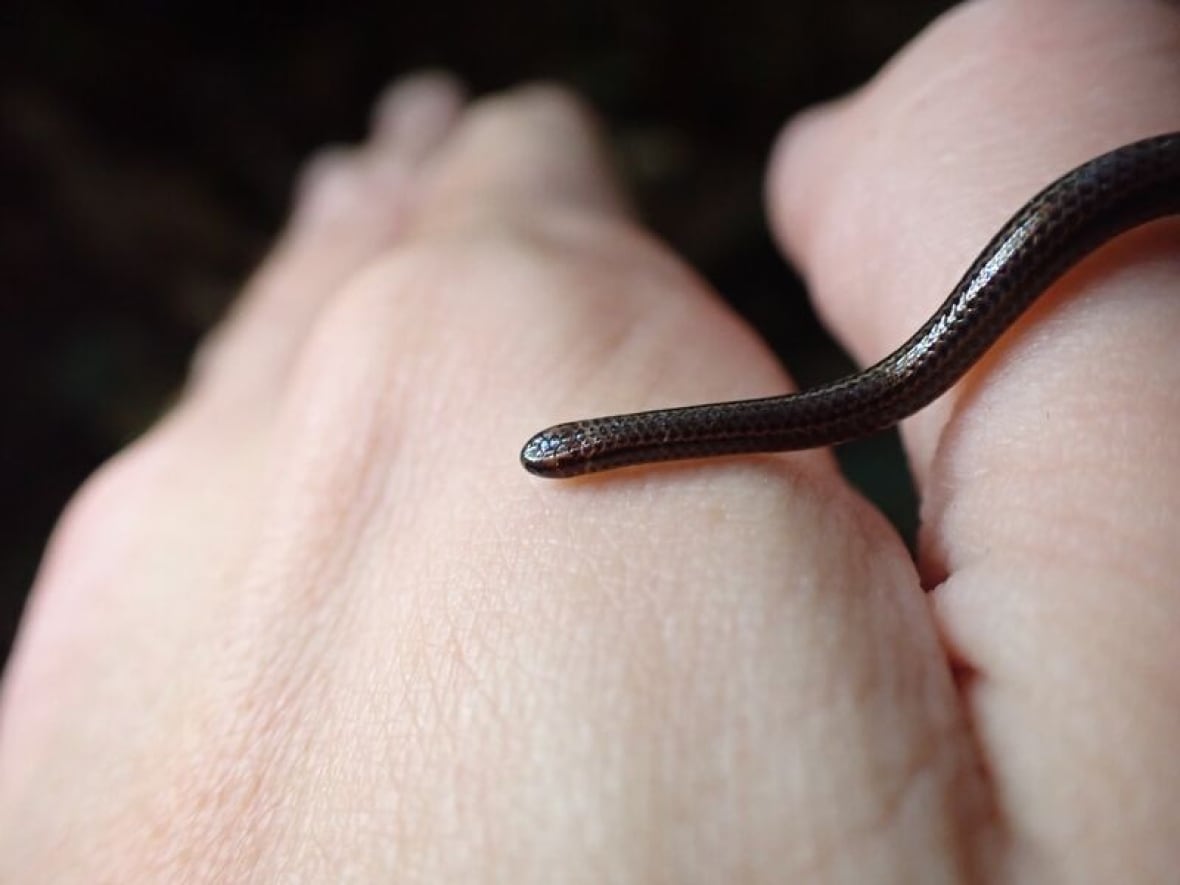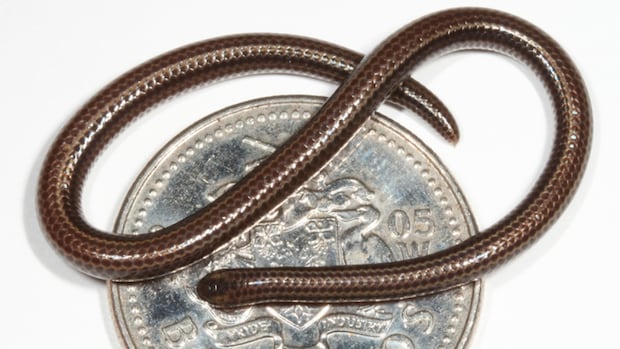As It HappensScientists re-discover the world’s smallest snake, hanging out under a rock in Barbados
Until this spring, the world’s smallest species of snake was considered lost to science, and quite possibly extinct — until Connor Blades and his colleague found one under a small rock in a forest in Barbados.
“I was very excited,” Blades, an ecologist with the Ministry of Environment in Barbados, told As It Happens guest host Megan Williams.
“It hasn’t been seen in basically two decades, so it was quite an exciting find, to say the least. Probably one of the highlights of my career so far.”
The re-discovery of the Barbados threadsnake is a positive sign for his country’s biodiversity, Blades says. Since the Caribbean island was first colonized by Europeans in the 16th century, 98 per cent of its natural forests have been destroyed, and with them, much of its native wildlife.
Thousands of ‘lost’ species
At roughly 10 centimetres in length and two millimetres in width, the Barbados threadsnake is small enough to fit neatly coiled on a coin.
At first glance, you could be forgiven for thinking it’s a worm. And, in fact, it’s also known as a wormsnake, but most earthworms are actually much bigger, says Blades.
It’s endemic to Barbados, which means the island is its only home. It’s blind, and is believed to feast mainly on termites and termite eggs.
“Obviously, the smaller you are, the fewer things you can eat,” Blades said. “You don’t have a very big mouth.”
It’s also one of several species re-discovered in recent years with the help of Re:wild, a non-profit that partners with governments, universities and conservation groups to find and protect some 4,800 species it considers “lost to science.”
“Rediscovering one of our endemics on many levels is significant,” said Justin Springer, Caribbean program officer for Re:wild, who helped rediscover the snake along with Blades.
“It reminds us that we still have something important left that plays an important role in our ecosystem.”
Re:wild also had a hand in 2021’s discovery of an elusive De Winton’s golden mole in South Africa, spotted for the first time in 87 years, and a black-naped pheasant-pigeon, documented in 2022 on the island of Papua New Guinea for the first time since 1882.
Just to reiterate, it’s definitely not a worm
Because of its size and tendency to live in burrows, Blades says the little snake has always been “both rare and cryptic.” It’s only been documented on the scientific record five times in the last 135 years.
The first confirmed sighting was in 1889. But it wasn’t identified as a unique species until 2008, by S. Blair Hedges, a professor at Temple University and director of its centre for biology,
“I spent days searching for them,” Hedges said, reflecting on his initial quest for the snake. “Based on my observations and the hundreds of rocks, objects that I turned over looking for this thing without success, I do think it is a rare species.”
Hedges said that he didn’t realize he had collected a new species until he did a genetic analysis. Before that, it was mistakenly lumped in with another species.
“The ‘aha’ moment was in the laboratory,” he said, noting that the discovery established the Barbados threadsnake as the world’s smallest-known snake.
Afterwards, he says he became inundated for years with letters, photographs and emails from people thinking they had found more Barbados threadsnakes. Some of the pictures were of earthworms, he said.
“It was literally years of distraction,” Hedges said.

When Blades found the snake on March 20, he, too, worried it might be a case of mistaken identity.
He knew it wasn’t a worm, of course. But to the naked eye, the species is very similar to the slightly larger and much more populous Brahminy blind snake, which is invasive to Barbados.
Still, he says, something about this wriggly little creature seemed different.
“I got excited, but tried to have a level head,” he said.
They transported the snake in a small jar to the University of the West Indies, which confirmed under a microscope it had the telltale dorsal lines of a Barbados threadsnake running down its body.
A month after that initial find, Blades said, they found another one in a different part of the forest.
These findings, Blades said, will help him and his colleagues learn more about the species’ environment, and potentially find even more of them. Knowing where they are will help guide conservation efforts.
While Blades says Barbados has increased its tree cover seven fold in the last 50 years, the natural, moist forests the Barbados threadsnakes call home are rare.
“Where they were found is one of the last stands of relatively natural forest on the island, so it’s quite an important kind of habitat for Barbados,” he said.
“The fact that we know it still exists is a huge win for us because it means that it’s still contributing to our island and, I suppose, global biodiversity.”







